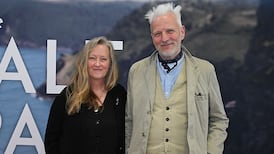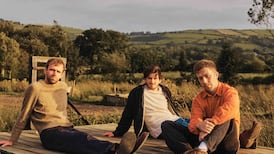2010 just called. It wants its digital strategy back. Anyone who has been paying attention to the travails of traditional media over the past 20 years might have experienced a slight sense of deja vu this week while reading A New Direction, the fleshed-out version of RTÉ's five-year plan to restore confidence in its governance and make it fit to face the challenges of the future.
That sense would have deepened listening to director general Kevin Bakhurst’s explanation that the organisation is on the cusp of its “third age” as it shifts its primary focus towards digital and away from the old linear delivery models of broadcast TV and radio.
If 2024 seems a little late for such insights, then that in itself is telling. Bakhurst is a sophisticated operator, so it indicates the scale of the challenge he faces that he believes the organisation is only now embarking on the digital-first strategy to which most media businesses have been committed, rhetorically, at least, for more than a decade.
The digital-first diagnosis is simple: audiences for linear broadcasting are ageing and dying off. Younger viewers, readers and listeners get their information and entertainment via on-demand platforms and streaming services. The solution is rather more complicated, requiring an upturning of internal priorities and cultures that have developed over generations and a willingness to deprioritise existing older audiences in favour of hypothetical younger ones who may or may not be persuaded to forsake their preferred platforms.
READ MORE
A New Direction does a reasonable job of stating the bleeding obvious in laying out these dynamics, which it predicts “will in time inevitably result in steadily decreasing audiences for public service media”. The use of the future tense here is peculiar; that process is already well under way.
RTÉ must forever carry the unfair burden of comparison with the BBC, but comparisons with the iPlayer and Sounds apps are unavoidable. RTÉ's equivalents are still trapped in Bakhurst’s “second age”. (One small, unacknowledged advantage the digital shift has handed RTÉ is that the iPlayer, unlike BBC TV, is geoblocked in Ireland.)
Upgrading the RTÉ Player and launching a new audio app are priorities set out in the plan, which is welcome but no more than should be expected. What is more interesting is a decision to give up on ageing studio infrastructure and facilities in Montrose, with limited capital investment in new production capabilities and a shift to off-site production.
Most reports this week led with the proposal to move Fair City and The Late Late Show off the Montrose campus, either putting them out to tender to the independent sector or negotiating a co-production arrangement with independents. The two flagships are significant cost centres as well as major revenue generators for RTÉ. They also carry a symbolic weight, and the move suggests that everything outside the news and current affairs division could ultimately be farmed out to the independent sector. That would obviously go a long way towards achieving the 20 per cent reduction in staff headcount that has been promised as part of RTÉ's pitch for a new public funding mechanism. And it could be interpreted as a response to the thinly-veiled scepticism of senior Government ministers about RTÉ's ability to reform itself.
The vision appears to be of a smaller organisation that invests more of its resources into content (and presumably less on administration, building maintenance and other non-core overheads). Is that a bad thing? Some will see it as part of a larger, pernicious process of media outsourcing and casualisation, but there has always been a tension between that position and the argument for building a larger independent audio-visual sector.
There is no reason, after all, why public service media can only be produced by public sector employees. The existing media landscape proves that’s not the case, a fact recognised by the report of the Future of Media Commission in 2022.
The real problem with A New Direction is the absence from its pages of any acknowledgment of the challenges RTÉ and other media face now: the rise of generative artificial intelligence; the collapse of the online advertising market; the end of the international drama production boom. There is also a failure to acknowledge RTÉ's responsibility not to throw its weight around in a fragile indigenous media ecosystem. The malpractices at Montrose that gave rise to the crises of the last year were self-inflicted and had their roots in RTÉ's deliberate blurring of the lines between its public service obligations and its commercial activities. How will those distinctions be made in its “third age”? On this, as on much else, A New Direction provides no direction at all.

















